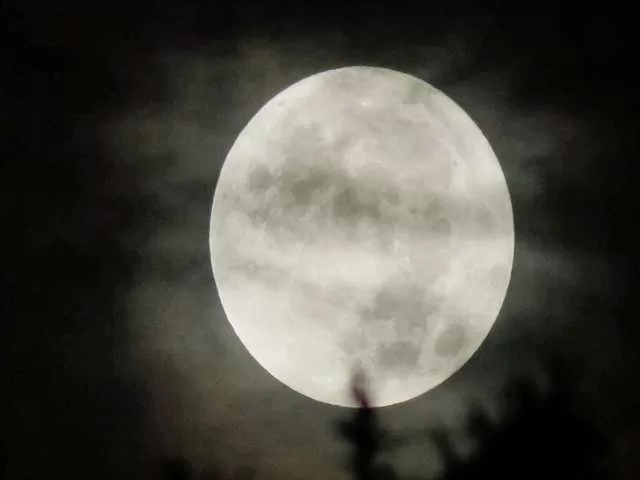Catch the brilliance of the Wolf Moon tonight at 5:54 pm GMT. Learn why it’s named so, and get tips for optimal viewing. Next up, the ‘Snow Moon’ in February!
Gaze at the Night Sky: The Spectacle of the Wolf Moon Illuminates Tonight
Prepare to be captivated as the celestial theater presents the Wolf Moon, the first full moon of the year, in all its luminous glory tonight. Skygazers and space enthusiasts are in for a treat, but timing is key if you want to witness the lunar spectacle.
While Wednesday’s moon teased us with its almost full appearance, tonight, the Wolf Moon will complete its celestial dance. The lunar show will unfold on Thursday, January 27, 2024, at 5:54 pm GMT, casting its radiant glow upon the night sky.
According to the Royal Museums Greenwich, a full moon occurs during the waxing (growing) and waning (shrinking) process, presenting itself as a complete orb when the side facing the Earth is fully illuminated by the Sun’s rays. But why is it dubbed the “Wolf Moon”?
The origins of the name remain somewhat shrouded in mystery, but Medieval Europeans and several Native American tribes designate January’s moon as the ‘Wolf Moon.’ Legend has it that wolves howl more fervently around this time due to a scarcity of food. In Anglo-Saxon tradition, it was the ‘Moon After Yule,’ while other European regions refer to it as the ‘Ice Moon’ and the ‘Old Moon.’
To witness the Wolf Moon at its zenith, lunar aficionados are encouraged to ascend to higher ground, escaping the clutches of light pollution. The moon and stars will shine more vividly against a darkened sky, enhancing the celestial spectacle. The Wolf Moon will reach its full brilliance at precisely 5:54 pm GMT.
For an enhanced viewing experience, those equipped with visual aids like binoculars or telescopes can marvel at the lunar landscape with intricate detail. As the Moon’s Earth-facing side basks in the Sun’s full illumination, it reflects the light back to Earth, providing an awe-inspiring view.
But what lies beyond tonight’s celestial exhibition? The next full moon graces our skies in February, with its peak illumination anticipated on Sunday, February 24, at 5:53 pm local time. February’s moon bears the moniker ‘Snow Moon,’ continuing the tradition of naming each full moon according to the month it ascends.
As a cosmic bonus, a full moon appears roughly every 29.5 days, marking the lunar phase cycle. Typically, this results in one full moon per month, totaling 12 in a year. However, occasional years witness the appearance of two moons in the same month, hosting 13 full moons – a phenomenon known as a ‘Blue Moon.’ The last occurrence of this rare lunar event graced the night sky in August 2023.
Tonight’s Wolf Moon beckons, inviting all to gaze skyward and immerse themselves in the cosmic wonder that has fascinated civilizations for centuries. Don’t miss this celestial extravaganza, a timeless reminder of the cosmic ballet unfolding above us.

